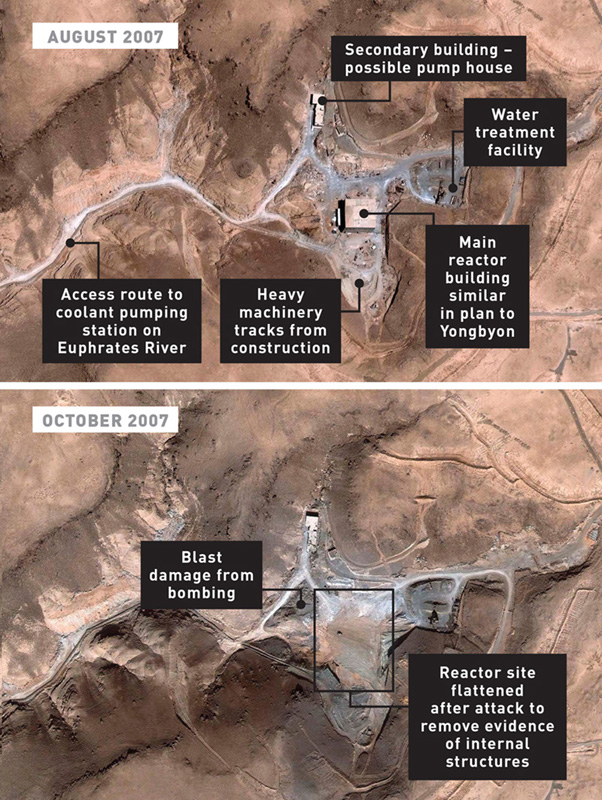
LOCATION Northeastern Syria
NEAREST POPULATION HUB Dayr az Zawr
SECRECY OVERVIEW Operations classified: site of a suspected nuclear facility bombed by Israel in 2007.
On September 6, 2007, it is widely accepted that a squadron of Israeli jet fighters flew across Syria and razed a major complex at Al Kibar to rubble in a mission known as Operation Orchard. Later, Israel would deny that such an incident took place, while Syria protested the violation of their airspace but denied that there had been significant damage. So what exactly was going on in the Syrian desert?
Within hours of the attack, the Syrian news agency reported an incident in which air defense units had confronted Israeli planes and “forced them to leave after they dropped some ammunition in deserted areas without causing any human or material damage.” An Israeli spokesman was reported as saying that “This incident never occurred,” while US officials spoke of “second-hand reports” that contradicted each other.
The rumor mill inevitably went into overdrive, with claims that Al Kibar was actually a nuclear complex built with the assistance of North Korea. Syrian scientists at the plant, it was said, were on the verge of building a viable nuclear bomb. It is now thought that work on the complex got underway around 2002, and in 2004 US intelligence picked up on an unusually high volume of contact between Al Kibar and Pyongyang. The US would later release photographs showing what seemed to be reactor components at the site, and others showing the construction of buildings apparently designed to disguise what lay within. Al Kibar remains strictly off-limits to visitors, a fact attested to by residents of Dayr az Zawr, the last major outpost of civilization before the vast stretch of desert in which Al Kibar lies. Anyone who dares to cross the inhospitable landscape will soon find themselves subject to impassable roadblocks, while locals are warned that access is forbidden on security grounds.
Under international pressure, the Syrian government eventually claimed that the site had been a conventional weapons facility, and categorically denied any involvement by international partners. In 2008, Damascus finally allowed experts from the International Atomic Energy Agency (IAEA) to inspect Al Kibar. They found a site that had been hurriedly cleared of debris and concreted over—suggesting the Syrians had something to hide. Sure enough, despite the absence of a “smoking gun,” the IAEA concluded in 2011 that Al Kibar almost certainly had been a nuclear facility—one that for a long time none of the key regional players have wanted to admit existed.